This month, six artistes will celebrate the legacy of the Central Asian route at the Royal Opera House
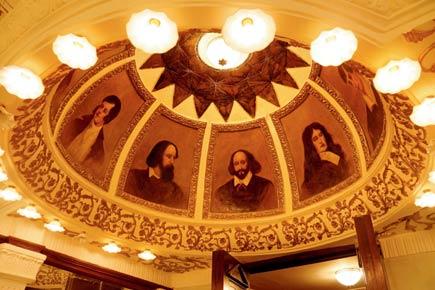
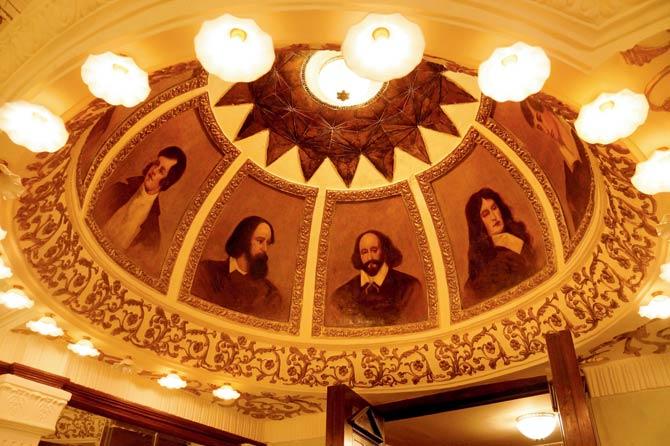
ADVERTISEMENT
Later this month, the dome-shaped ceiling of the restored, 574-seater Royal Opera House will reverberate with music from a four-stringed Chinese lute called pipa, the Afghan rubab, qanun (known to be part of Middle Eastern music since the 10th century), saxophone and tabla. Playing the instruments, which represent the Eastern and Western ends of the historical Silk Route, will be six artistes from China, Afghanistan, Syria and Italy. They’ve been brought together by the Aga Khan Music Initiative (AKMI) for a concert titled, New Music from the Ends of the Silk Route, presented in association with Asia Society India Centre.
The Silk Route refers to an ancient network of trade routes through regions of the Asian continent connecting the East and West, from China to the Mediterranean Sea. The route derives its name from the Chinese silk trade carried along its length during the Han dynasty (207 BCE - 220 CE). “The trans-Eurasian trade routes also served as conduits of cultural exchange, which included music. The ensemble represents a present-day incarnation of that legacy of inter-cultural connectivity, which in turn, stimulated the creation of new musical styles, genres, and instruments,” shares Fairouz R Nishanova, director of AKMI, an interregional music and arts education programme.
The ensemble features artistes who have worked with AKMI for over 15 years not only as performers, but also as pioneering composers, arrangers, improvisers and teachers. Bunty Chand, CEO, Asia Society India Centre, shares, “Over the years, AKMI has connected USA and Asia through music. This year, they shared an interest in coming to Mumbai and it was the perfect way to
celebrate Asia Society’s 10th year in India. At a time of great change around the world, the performance, with musicians from Central Asia, exemplifies our mission to build bridges of understanding and trust while highlighting the existing connections between the people of Asia.”
Meet the artistes
Andrea Piccioni
Instrument: Frame drums
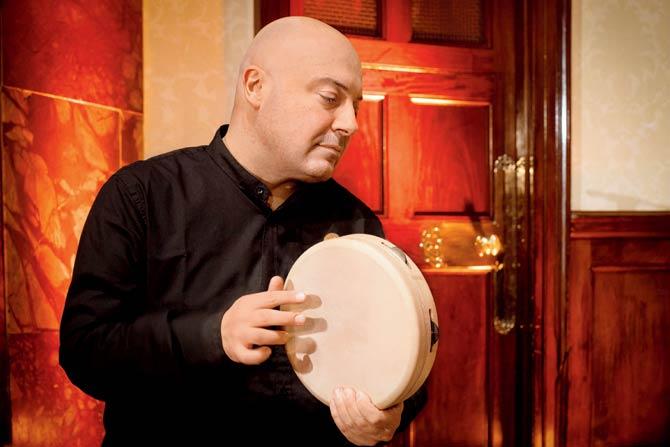
A native of Rome, Piccioni first mastered the Southern Italian percussion instrument, tamburello, and then, went on to study studied frame drum rhythms — single-headed drums played with hands rather than sticks — and its performance techniques from the Middle East, North Africa, and Central Asia. An experienced teacher, he is also the artistic director of Frame Drums Italia International Festival.
Basel Rajoub
Instrument: Saxophone, duclar
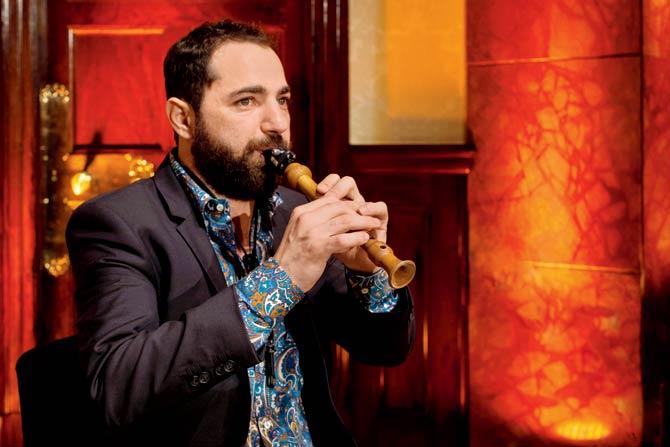
Over time, saxophone, the European invention has become a universal instrument used by musicians from South India to South Africa to perform myriad forms of traditional, fusion and contemporary music. One of them is Syria-born Rajoub, who graduated from the Damascus High Institute of Music. He also plays the duclar, a wind instrument, and is a composer, who creates music inspired by traditional Middle Eastern rhythms as well as Jazz, by bringing together musicians from the Middle East, North Africa, Asia, and Europe. He teaches too.
Feras Charestan
Instrument: Qanun
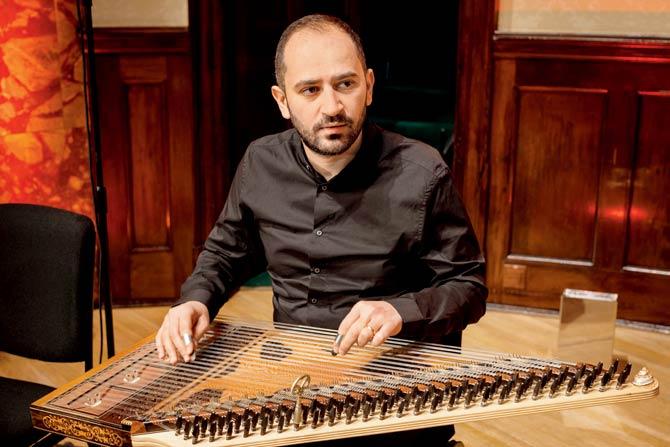
Hailing from the city of Al-Hasakeh in the northeast of Syria, Charestan studied qanun at the High Institute of Music in Damascus. The artiste has performed as a qanun soloist with symphony orchestras. He has been a member of popular bands as well as contemporary music ensembles that are creating new music rooted in Middle Eastern traditions.
Homayun Sakhi
Instrument: Afghan rubab
Born in Kabul, Sakhi is a master of the rubab, considered the national instrument of Afghanistan but also used among Kabuli musicians to perform Indian classical music. Hailing from one of Afghanistan’s leading musical families, Sakhi is the heir to a musical lineage that began in the 1860s, a time when Amir Sher Ali Khan, the ruler of Kabul, brought classically trained musicians from India to perform at his court. Besides Afghan folk and popular music, he also performs North Indian classical music (raga).
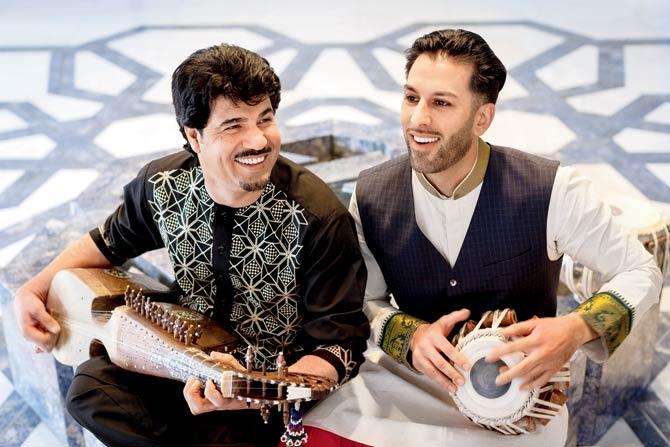
Homayun Sakhi and Salar Nader
Salar Nader
Instrument: Tabla
Nader was born in Germany to Afghan parents, who were forced to flee their home during the Russian-Afghan war. As a child, he moved to San Francisco. When he was all of seven, he began studying with the tabla virtuoso Zakir Hussain. He has performed in an eclectic range of ensembles and international music projects, besides teaching tabla
in US and Afghanistan, with an aim to revitalise the indigenous musical
tradition.
Wu Man
Instrument: Pipa
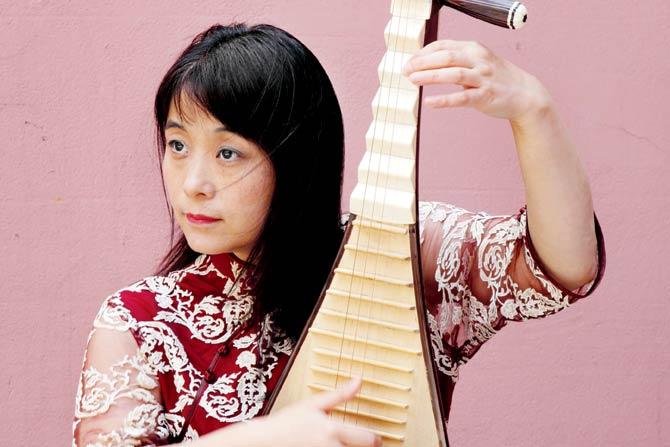
A world-renowned performer on the pipa, Wu Man has been instrumental in putting the ancient four-stringed Chinese lute on the global map as a leading instrument of contemporary music in the East and West. The artiste performs traditional and contemporary music on the pipa. She was also a founding member of the Silk Road Ensemble, created by cellist Yo-Yo Ma, and has played an active role in cross-cultural music making, in particular with members of China’s Uyghur minority.
 Subscribe today by clicking the link and stay updated with the latest news!" Click here!
Subscribe today by clicking the link and stay updated with the latest news!" Click here!






